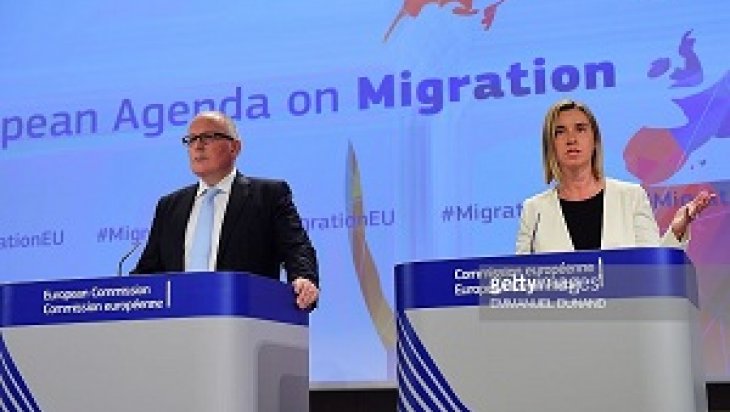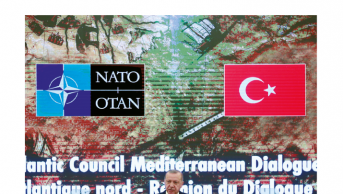Coercive use of Migration as a Foreign Policy Instrument

European states try to lay the burden on Turkey and encourage such acts in terms of the solution to or insolubility of the migration problem. This also proves that the migration issue is a coercive foreign policy instrument.
In this article, we will analyze whether it is possible for the Syrian refugee crisis to be used as a foreign policy instrument. As Greenhill mentioned in her book titles The Weapons of Mass Migration, the view that refugee issues are rarely used as a coercivepolitical strategy or migration-caused pressure makes such an analysis valuable. The literature on asylum-seekers/refugees/migrants is generally interested in the humanitarian, legal, economic and political dimensions of the issue. The aim of this study is to discuss the possibility that the forced migration which has emerged since the beginning of Syrian civil war can be used as a coercive foreign policy instrument by theSyrian (Assad) regime and its supporters. Therefore, it will be beneficial to explain the brief history of the political and international background of the issue. Following the historical explanation, the analysis will seek to answer to what extent migration is used as a coercive foreign policy instrument and to underline its importance as a political issue.
Political and International Characteristics of the Refugee Problem
Before the 20th century, there were two consequences of contradiction with or opposition to a regime: either migration or consent with the opposed situation. The first option led to a new category during and following the world wars: refugees. As Edward Said rightly confirms, seeking refuge is a category which the 20th century politics caused to emerge. It goes without saying that refugees started to constitute a political problem when the national borders were drawn after the First World War. Since there was previously no border gate or passport control, it was not possible to mention such a group in political means.
Even though International Refugee Organization (IRO) was initially established for humanitarian purposes after the World War II, it was marked by political discussions and rifts. There are two important interstate discussions which account for the foundation process of the organization: the discussion at Third Committee the UN General Assembly (28 January-12 February 1946) and the negotiations at the Special Committee on Refugees and Displaced Persons (8 April-1 June 1946). The discussions where the disagreement between Western and Eastern European powers left its mark led to the enactment of the IRO Constitution on 15 December 1946 with the adoption of the issues underlined by the Western by unanimous vote. The initiative taken with human concerns took a political form due to profoundly different answers of the West and the East to the question ‘who is a refugee?’ and the discussions about it. The form, budget and constitution of the emerging international organization were determined in favor of the Western European states. With the Geneva Conventions signed in 1951, the organization drew a normative framework of the attitudes of many states towards refugees and also paved the way for mass migration to be used as a policy instrument.
Refugee Issue as a Coercive Foreign Policy Instrument
Of course not all migrations can be categorically considered as coercive policy instruments. The motivations and the willingness of migrants should be taken into consideration. If we use Greenhill’s conceptualization, strategically used forced migration should meet certain conditions: (i) the migration should be planned (to a large extent); (ii) it should be strategic and lastly (iii) it should be coercive. If these three conditions are considered, Assad could not have received the support that he had expected after Syrian civil war broke out. Therefore, he used conventional means to punish and deter both the opposition and the states supporting it. In addition to these means, he tried to bring balance the playing field by forcing his people to mass migration, thus using migration as a foreign policy instrument. Furthermore, he increased his weight and his potential threats as well as improving his coercive skills in several different means in contrast to the common view that he was a weak actor. Especially Turkey, Qatar and Saudi Arabia could not estimate that Assad would cause such a crisis and conflict since the Assad regime was losing its legitimacy and skills. Secondly, they considered such a crisis to be irrational and lunatic. As a consequence, Syrian regime could engineer the migration so that it would lead to administrative conflicts in the refugee receiving countries that are opposed to it. Thanks to this, it could initially use migration as a leverage against those who tried to knock it out. Nothing could be expected from an already irrational actor other than to resort to mass migration, any kind of act (especially terrorism) that would disrupt the stability of the target country and to persuade the addressee with irrational means.
Furthermore, the country which causes migration as a coercive actor is able to use several overlapping mechanisms together: causing the erosion of the government of the target country, exacerbating the level of local discontentwith the regime of the target country, interrupting its security and generally reducing the energy of the target country. The ID card of the suicide bomber found afterthe explosion in Sultan Ahmet in January 2016, Istanbul explicitly proves that migration can be used as a destabilizing instrument. As it turned out, the suicide bomber was a refugee, which was used as a ‘persuasive’ and efficient argument that the government in Turkey was losing its political legitimacy because of its Syria policy. In this sense, it is inevitable that Turkey’s open door policy towards Syrian refugees will be seen as its Achilles heel and coercively used against a country already ridden with the threat of an ethnic conflict at any moment.
With these mechanisms, if a migration movement is used to pressure the economic and physical coping capacity of the target country, this causes two kinds of damage in the latter. Firstly, the damaged caused in the economy of the target country leads to social unrest and displeasure as well as lack of trust with the government. Secondly, all these compelling factors lead the target country to make several mistakes (such as failing in the protection of refugee rights and closing the border gates) and to act in contrast to the ‘international norms’. Furthermore, another important political mechanism is to build camps for and against refugees by using the heterogeneous nature of the target country. This is not primarily a political problem because of heterogeneous nature of the issue but because of differing opinions on the problem. On the one hand, there are groups that support the integration of refugees. On the other hand, groups that support the refoulement ofrefugees are abundant. Indeed, even though government officials highlight Turkey’s humanitarian approach to the issue, the fact that Syrian refugees are officially under ‘temporary protection’ and called ‘guests’is a natural consequence of this political dilemma. As of the consequence, this political dilemma weakens the position of the target country once again vis-à-visthe migration producing country, i.e., the Assad regime.
In fact, even though Western liberal democracies assume a very small part of the burden that Syrian refugees cause, the migration to the West is disproportionately considered as a threat. Therefore, European states which do not want to stand the economic and social burden and security risks that the refugee crisis causes remain silent and passive towards the Assad regime. This is the most important proof that the migration issue can be used as a coercive foreign policy instrument. (At least the majority of) the Western states and people are convinced that the refugees constitute a serious threat to their national interests. This causes the increase in the control and restrictions over migration and migrants and leads xenophobia and racism to gain favor. Indeed, in a study that European Commission conducted in 2007, European citizens marked migration as the second most serious problem that the EU might encounter.
In conclusion, states inevitably act in accordance with a situation where most of the people are threatened by refugees as a major democratic principle. Of course, the ability and power of states to manipulate perception should not be ignored in democracies at this point. However, it is obvious that European states perceive and address Syrian refugees only as a humanitarian or security issue. In this manner, the most important proof that Assad tries to use or even succeeds in using the migration issue as a coercive foreign policy instrument against Europe is that the Assad regime is still in power. If we put aside the conspiracy theories about who will benefit from the Syrian war in the long run, the fact that European states try to lay most of the burden of the Syrian refugee crisis on Turkey or encourage Turkey to do soalso proves that migration can be used as a coercive foreign policy tool. Whether Turkey’s policies in this regard will succeed or fail is worth being the topic of another analysis.
This article was published in Ortadoğu Analiz journal with the title of "Coercive use of Migration as a Foreign Policy Instrument ”





